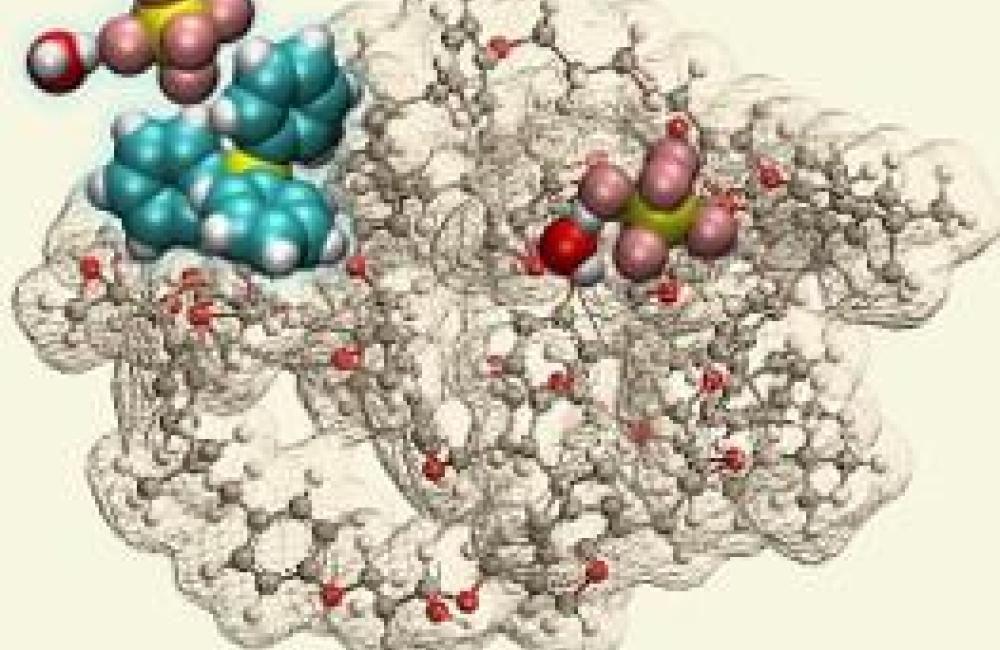Structures of a polymer dimer with photo-activatable triarylsulfonium hexafluoroantimonate and fluroantimonic acid.
Scientific Achievement
Structures of a polymer dimer with photo-activatable triarylsulfonium hexafluoroantimonate and fluroantimonic acid. (hi-res image)
Incorporation of ZnO into an epoxy-based photoresist (SU-8) thin polymer film via vapor-phase infiltration synthesis increases the gravimetric oxygen and water response to vapor by a factor of 20, and further enhanced under UV-light exposure.
Significance and Impact
Provides a new workflow for design and characterization of reversible gas/vapor adsorption in oxide-epoxy hybrid nanocomposites and optimizes their application to high-sensitivity gravimetric sensing.
Research Details
- Used a combination of infiltration synthesis of ZnO in SU-8 thin films (CFN) and multi-modal structural and sensing characterization of thin films (CNMS).
- First principles simulations (CNMS) indicate that UV light increases hydrophilicity by activation of a photoacid generator.
E. S. Muckley, L. Collins, A. V. Ievlev, X. Ye, K. Kisslinger, B. G. Sumpter, N. V. Lavrik, C.-Y. Nam, and I. N. Ivanov, "Light-activated hybrid nanocomposite film for water and oxygen sensing," ACS Appl. Mater. Interfaces 10 (37), 31745-31754 (2018). DOI: 10.1021/acsami.8b08072





